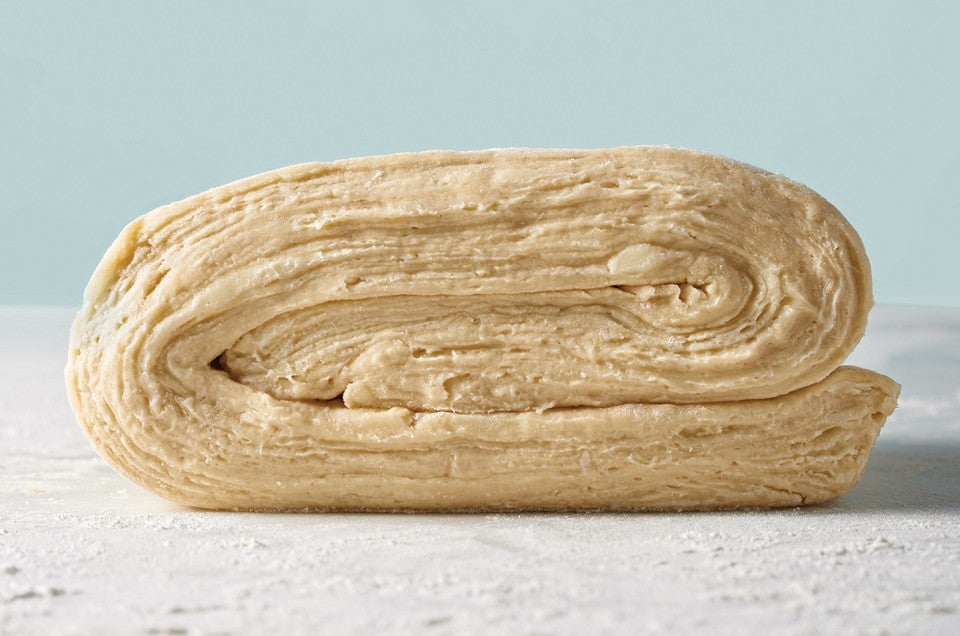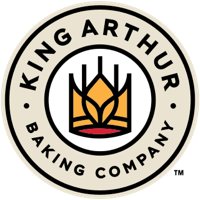


Puff pastry.
Buttery, flaky, delicate. Hundreds of layers of dough and butter.
Hard to make?
Let's see how the Bakery at King Arthur Flour does it.
Start with a base dough, made with flour, salt, water, and butter. No yeast; all the leavening comes from the layers of butter. During the baking process, as the butter melts, the steam puffs the layers of dough up.
Place a square of cool, but pliable butter on the dough. Soft butter will melt into the dough – or more likely ooze out during the layering process.
Press the dough over the butter so it's completely encased.
Now that the butter is in, we're ready to roll!
This process is called lamination, because we're constructing the dough by building up distinct layers of butter and dough.
In most professional bakeries where puff pastry is made, you'll find a dough sheeter. Think of a giant pasta machine, the kind that has two adjustable-width rollers for dough to pass through.
The dough goes through one side, and comes out of the other side uniformly thinner.
Now that we have a long, thin rectangle of dough, it's folded in half. The seam is off center, and there's slight overlap to make sure that every bit of dough gets a layer of butter.
When the dough is folded in half again, one "four fold" is complete.
The process of rolling and folding is repeated three more times, for a total of four folds resulting in over 500 layers.
Now the dough must be chilled and rested before it's ready to be rolled out and baked.
Here's a cross section of the laminated dough.
Very cool, but can I do it at home? Sure, start with this recipe for classic puff pastry.
Let's see home bakers in action in the King Arthur Flour Baking Education Center.
Students make their base dough and refrigerate it to chill and allow the gluten to relax.
Meanwhile, the cold butter is pounded with a rolling pin to become pliable, and then formed into a square. The lamination process happens in the same way as in the professional bakery – except everything is done by hand ,with a rolling pin, rather than using the dough sheeter.
To make "palmiers," a.k.a. elephant ears, the fully layered (and rested and chilled) dough is rolled out in raw sugar, and formed.
The finished product: crisp, flaky, light, and rich at the same time.
Yes, this is student product, although it looks good enough to be in any bakery case!
So is it too hard to make at home? Absolutely not! Time consuming, yes. But, worth every bite.
Read, bake, and review our recipe for Classic Puff Pastry.
And, when you're in a rush, try this recipe for Fast and Easy Puff Pastry.












